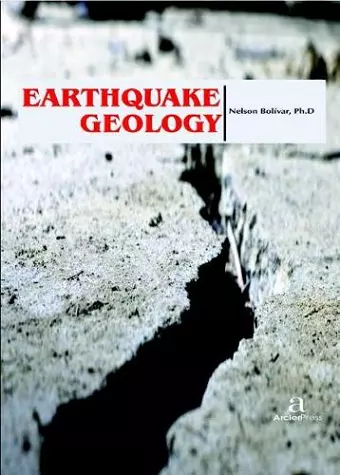Earthquake Geology
Format:Hardback
Publisher:Arcler Education Inc
Published:30th Nov '16
Should be back in stock very soon

An earthquake is always an unexpected phenomenon. Modern science is not able to predict the time or the place or the earthquake strength. The problem of locating the focus of a starting earthquake has not even been set due to the poor level of understanding the processes preceding its start. At present the main earthquake hypothesis is the “explosive” relaxation of the high elastic stresses accumulated in the lithosphere. Understanding a fault’s slip behavior, as well as its length and connectivity, is important for constraining the magnitude range and frequency of earthquakes that a particular fault is likely to produce.
This book, Earthquake Geology, presents contributions from researchers of different countries in the world that point out the study of seismoinduced phenomena associated with recent and historical earthquakes. First chapter aims to estimate the response of freestanding full-scale equipment to 2% in 50 years hazard level motions, and the results are used to generate ready-to-use fragility curves and second chapter emphasizes on earthquake forecast with the seismic sequence hierarchization method. Third chapter encompasses the micro-earthquake monitoring with sparsely sampled data. In fourth chapter, we analyze in detail the features of the experimental weakening curves and provide a general fit which is purely empirical, with the synthesis of a large number of experiments and their result in terms of frictional breakdown energy Gf. Fifth chapter presents how to locate the focus of a starting earthquake and sixth chapter presents research on earthquake radon anomalies. Seventh chapter highlights on seismic sequence structure and earthquakes triggering patterns and eighth chapter emphasizes on predicting earthquakes with microsequences and reversed phase repetitive patterns. Application of commensurability in earthquake prediction is discussed in ninth chapter and tenth chapter gives out the co-planarity and symmetry theory of earthquake occurrence. Eleventh chapter presents a numerical investigation of earthquake shielding with seismic crystals and twelfth chapter presents an evaluation of strain accumulation in global subduction zones from seismicity data. Thirteenth chapter reveals on modification in atmospheric refractivity and GPS based TEC as earthquake precursors, and fourteenth chapter proposes a seismic-acoustic system for monitoring the earthquake origin process. The aim of fifteenth chapter is to calculate hydrodynamical phenomena: Earth’s tidal and precursory variations in level of liquid in wells (boreholes) using identical systems of...
ISBN: 9781680944846
Dimensions: unknown
Weight: unknown
218 pages